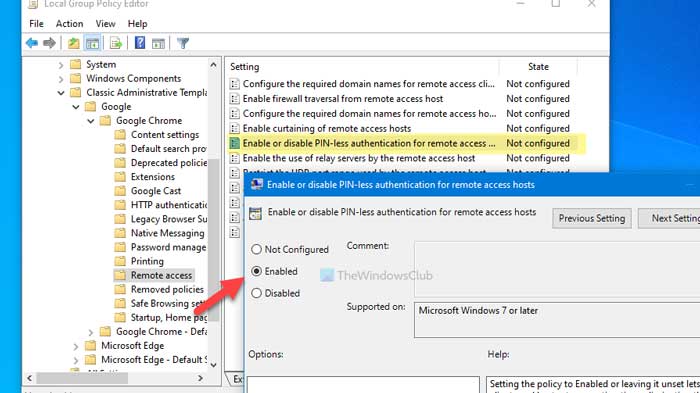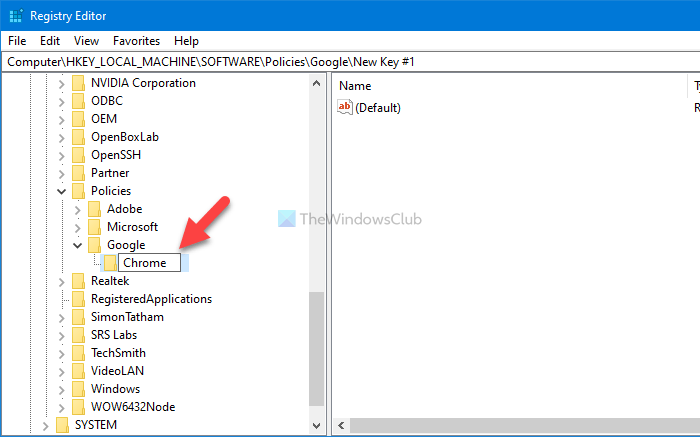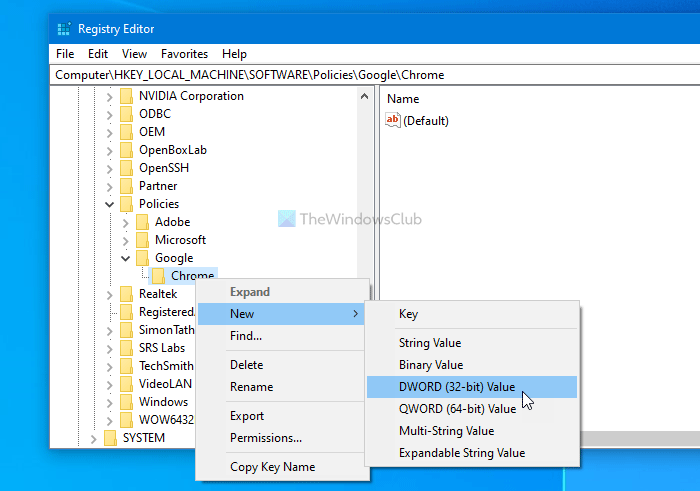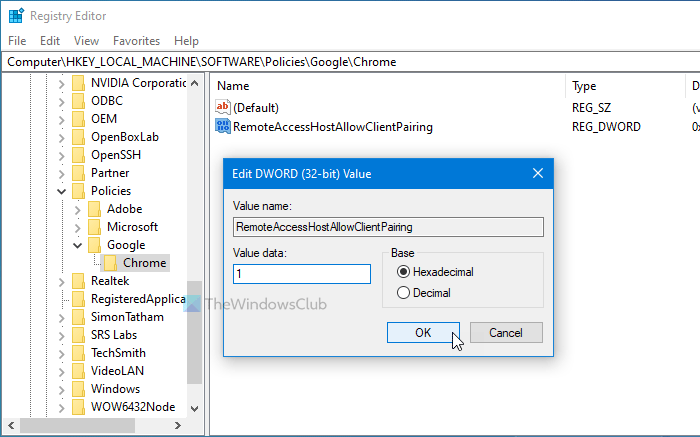If you use Chrome Remote Desktop to access another computer or share your screen, you have to enter a PIN to access the other computer. Similarly, if you want to allow someone to access your computer via the same tool, you have to provide a PIN to allow him/her to access your screen. If you want to enable or disable PIN-less authentication for remote access hosts in Chrome, here is how you can do that.
Google Chrome is one of the best and most feature-rich web browsers. It can do almost anything, from browsing regular websites to watching Netflix, smoothly. It also lets you share your screen with someone for remote assistance.
For security purposes, you need to provide a PIN to the person who wants to access your computer remotely. Let’s assume that you often help your old parents with different Chrome problems from being far away. Instead of asking them to send you a PIN, you can enable this PIN-less authentication to get access to your parent’s computer quickly.
It is possible to enable or disable this functionality using the Registry Editor and the Local Group Policy Editor. However, if you use the GPEDIT method, you must add the Group Policy Template for Chrome.
Enable PIN-less authentication for Remote Access Hosts in Chrome
To enable or disable PIN-less authentication for remote access hosts, follow these steps-
- Press Win+R to open the Run prompt.
- Type gpedit.msc and hit the Enter button.
- Navigate to Remote access in Computer Configuration.
- Double-click on the Enable or disable PIN-less authentication for remote access hosts setting.
- Select the Enabled option to allow or Disabled option to block PIN-less authentication.
- Click on the OK button.
Press Win+R, type, type gpedit.msc, and hit the Enter button. It opens the Local Group Policy Editor on your computer. After that, navigate to the following path-
Computer Configuration > Administrative Templates > Classic Administrative Templates > Google > Google Chrome > Remote access
Here you can see a setting called Enable or disable PIN-less authentication for remote access hosts.
Double-click on it and select the Enabled option to allow or Disabled option to block PIN-less authentication in the Google Chrome browser.

That’s it!
Using Registry Editor, you can turn on or off PIN-less authentication in Google Chrome. If you use the REGEDIT method, remember to create a System Restore point before proceeding to the steps.
Turn on PIN-less authentication for Remote Access Hosts in Chrome
To turn on or off PIN-less authentication for remote access hosts in Chrome, follow these steps-
- Press Win+R to display the Run prompt.
- Type regedit and hit the Enter button.
- Click the Yes option.
- Navigate to Policies in HKEY_LOCAL_MACHINE.
- Right-click on Policies > New > Key.
- Name it as Google.
- Right-click on Google > New > Key.
- Name it as Chrome.
- Right-click on Chrome > New > DWORD (32-bit) Value.
- Name it as RemoteAccessHostAllowClientPairing.
- Set the Value data to 0 to disable and 1 to enable.
Continue reading to learn more about these steps in detail.
First, you have to open Registry Editor on your computer. For that, press Win+R, type regedit and hit the Enter button. After that, click on the Yes option to open it on your screen. Then, navigate to the following path-
HKEY_LOCAL_MACHINE\SOFTWARE\Policies
Right-click on Policies, select New > Key and name it as Google. Then, right-click on the Google key, choose New > Key, and call it as Chrome.

After that, right-click on the Chrome key, select New > DWORD (32-bit) Value, and name it as RemoteAccessHostAllowClientPairing.

At last, you have to set the Value data as per your requirement. For example, if you want to enable PIN-less authentication, set the Value data as 1 and vice versa.

For that, double-click on the REG_DWORD value and enter the numerical value accordingly.
Now read: How to automatically disconnect from remote access on Chrome.
That’s all! Hope it helps.
Leave a Reply